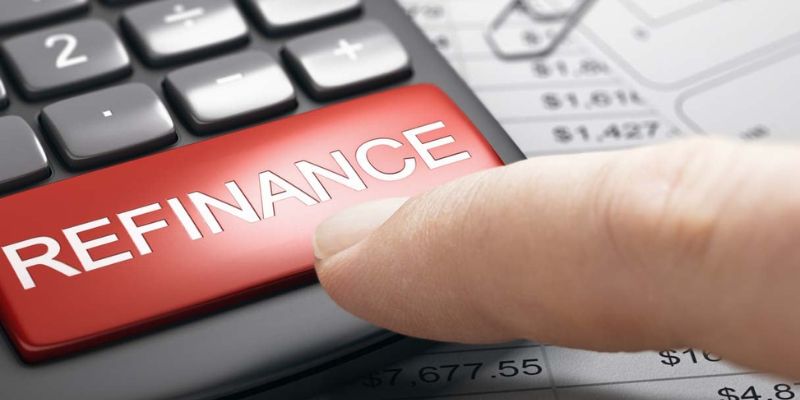Subprime credit is a term used to describe a borrower with a lower-than-average credit score. Subprime borrowers often need help accessing traditional forms of financing, including loans and mortgages. As such, they are usually offered higher interest rates and less favorable terms than those with higher credit scores. This guide will explore what subprime credit is and how it can affect your financial options. We will also discuss tips for improving your credit score to access more favorable financing products.
What Is Subprime Credit?
Subprime credit indicates a borrower’s risk level, determined by their credit score. Any borrower whose credit score falls below the median for a particular lender is considered to have subprime credit. Subprime credit scores usually range from 300-650, with anything below 600 considered a sign of significant risk.
What Are the Consequences of Having Subprime Credit?

Having subprime credit can make it difficult to access traditional forms of borrowing, such as loans and mortgages. Subprime borrowers may be offered
- higher interest rates
- longer repayment terms
- larger down payments and more restrictive lending criteria.
They may need help opening accounts with certain banks or creditors willing to take on the risk associated with subprime credit scores.
How Can I Improve My Credit Score?
Improving your credit score is essential to access more favorable financing products.
- Make your payments on time and consistently meet the minimum amount due each month.
- You can request a credit limit increase or sign up for automatic payments to always pay your bills on time.
- You should also consult your credit reports for errors and dispute any listed incorrect information.
- Reducing the debt you owe can also help raise your credit score over time.
Factors that Affect Your Credit Score:
Your credit score is determined by a variety of factors, including your
- payment history
- credit utilization ratio
- types of credit used
- length of credit history
- several inquiries.
Each of these will be taken into consideration when calculating your overall score.
Types of Loans Available to Subprime Borrowers:
Although subprime borrowers may have difficulty accessing traditional financing products, a variety of loan options are still available. These include
- High-risk loans typically have higher interest rates and shorter repayment terms.
- Payday loans are typically small, short-term loans that require the borrower to repay the entire loan on their next payday.
- Title loans are secured by the borrower's vehicle, meaning they can use them as collateral to secure a loan.
- Peer-to-peer lending allows borrowers to access funds from individuals or companies willing to invest.
Each of these loan types has its own set of risks and benefits. It is essential to do your research before deciding which one is right for you.
Tips for Managing Debt Responsibly:
Any borrower must manage debt responsibly, which can be essential for subprime borrowers. Here are some tips to help you stay on top of your debt:
- Create a budget and stick to it: it will help you stay on track with your payments and avoid taking on more debt than you can handle.
- Pay off the highest interest rate debts first: prioritize paying off the loans that have the highest interest rates so that you can save money in the long run.
- Find ways to reduce expenses: look for creative ways, such as lowering eating-out costs or avoiding impulse purchases.
Ask for help when needed: if you need help staying on top of your payments, feel free to reach out for help.
Resources for Further Education on Subprime Credit:

Various resources are available to help educate you on subprime credit and how to manage it responsibly. Here are some websites that can help:
Experian: Experian provides detailed information about managing your credit, understanding your credit score, and applying for loans with bad credit.
Credit Karma: Credit Karma offers free credit monitoring and personalized advice on improving your financial health.
MyFico: MyFico is a website dedicated to helping people understand their FICO scores, which many lenders use to determine loan eligibility.
The Balance: The Balance provides comprehensive educational articles on budgeting, debt management, and other personal finance topics.
Conclusion:
A subprime credit score can make it harder to access favorable financing products. However, by understanding the factors that affect your credit score and researching different loan options, you can find ways to manage your debt and improve your financial situation successfully. Many resources are also available to help educate yourself on managing subprime credit responsibly. With the right tools and knowledge, you can take steps toward building a solid financial future.
FAQs:
Q: What is a subprime credit score?
A: A subprime credit score is generally considered to be below 640. This indicates that the borrower may pose a higher risk to lenders and have difficulty accessing traditional financing products.
Q: How do I improve my subprime credit score?
A: You can improve your subprime credit score by making on-time payments, reducing your debt-to-income ratio, and limiting new inquiries into your credit report. Additionally, monitoring your credit regularly can alert you to errors that could hurt your score.
Q: Are loan options available for people with a subprime credit rating?
A: Yes, there are several loan options available for people with a subprime credit rating, such as title loans, peer-to-peer lending, and payday loans. It is essential to do your research and understand the risks and benefits associated with each before making a decision.




